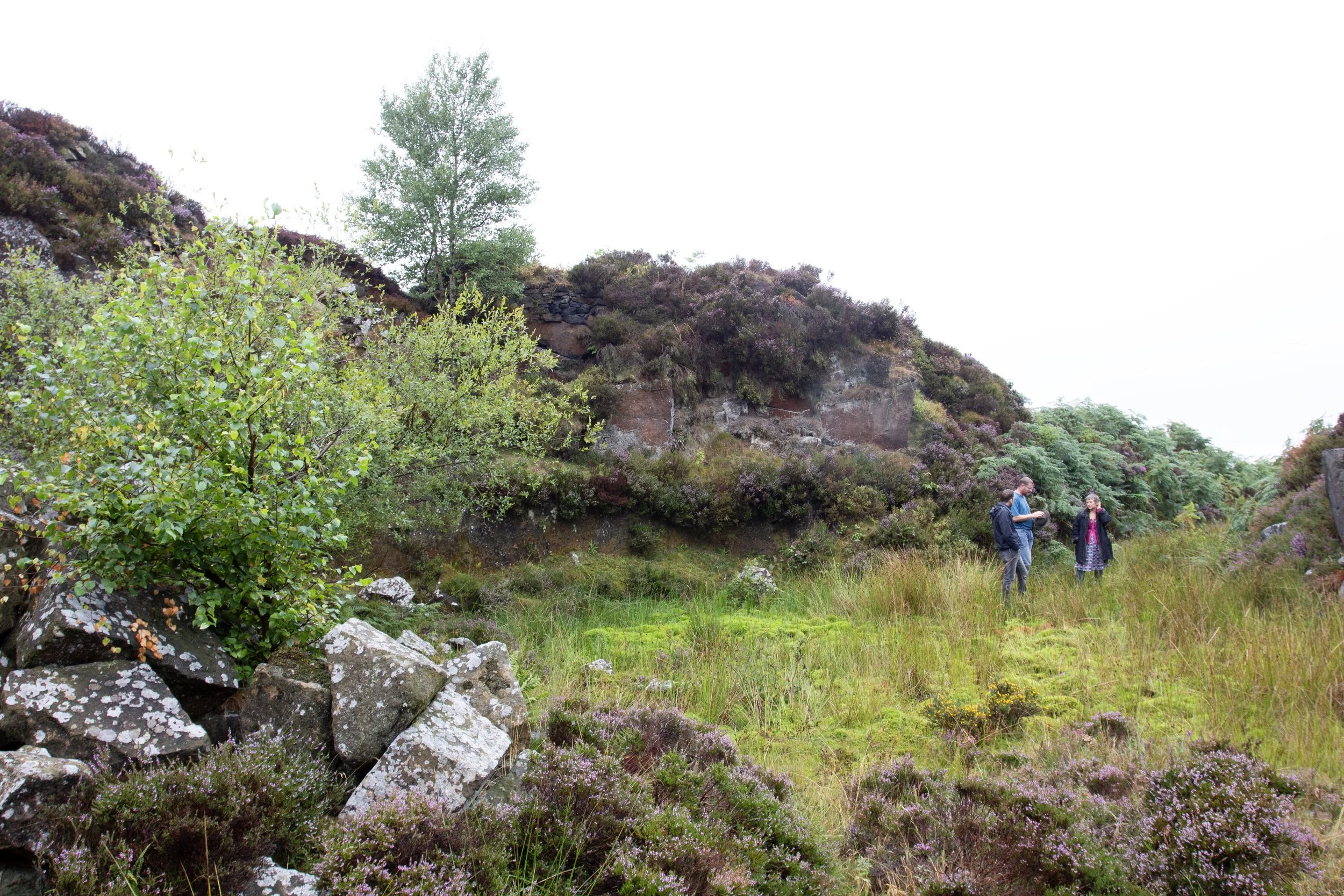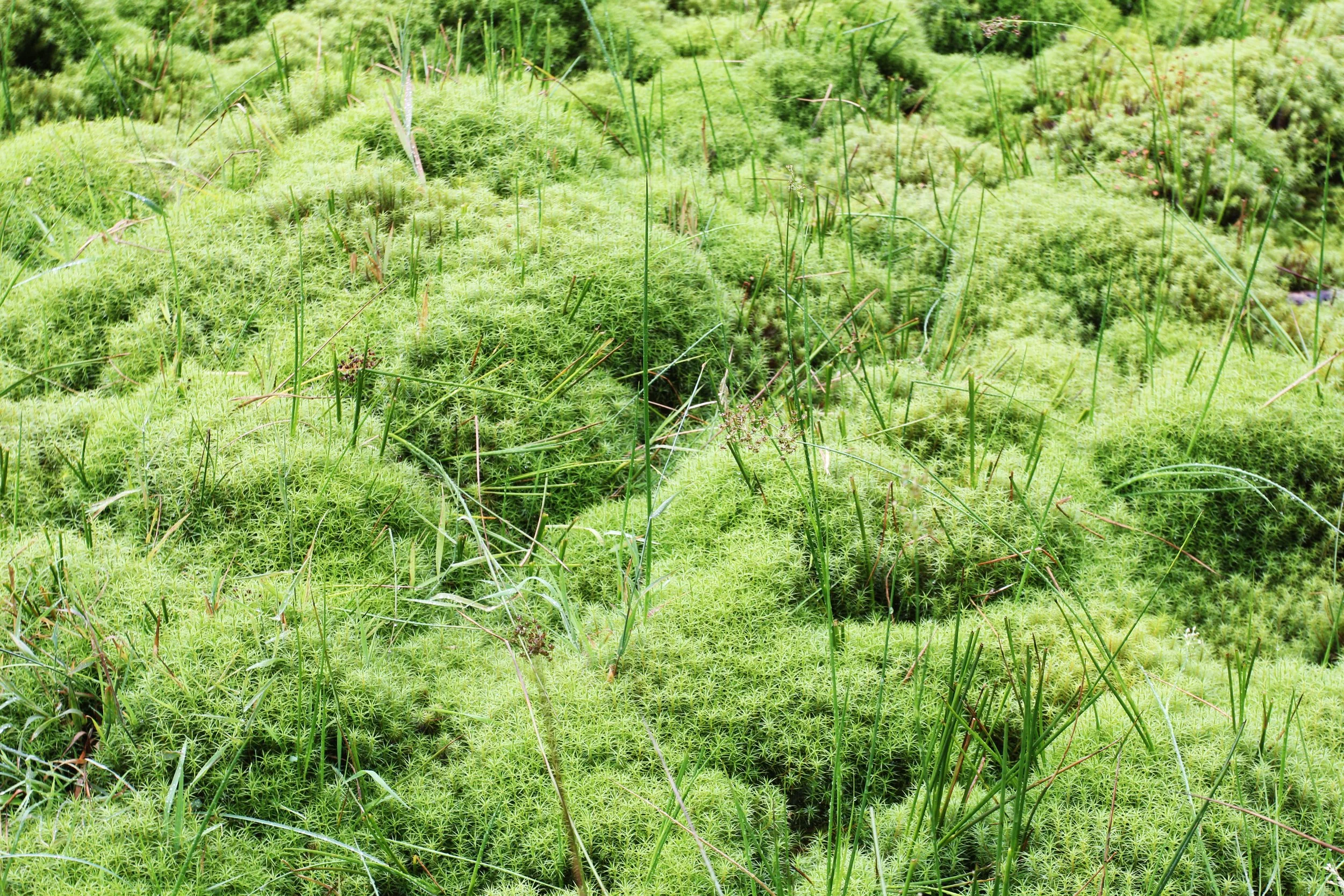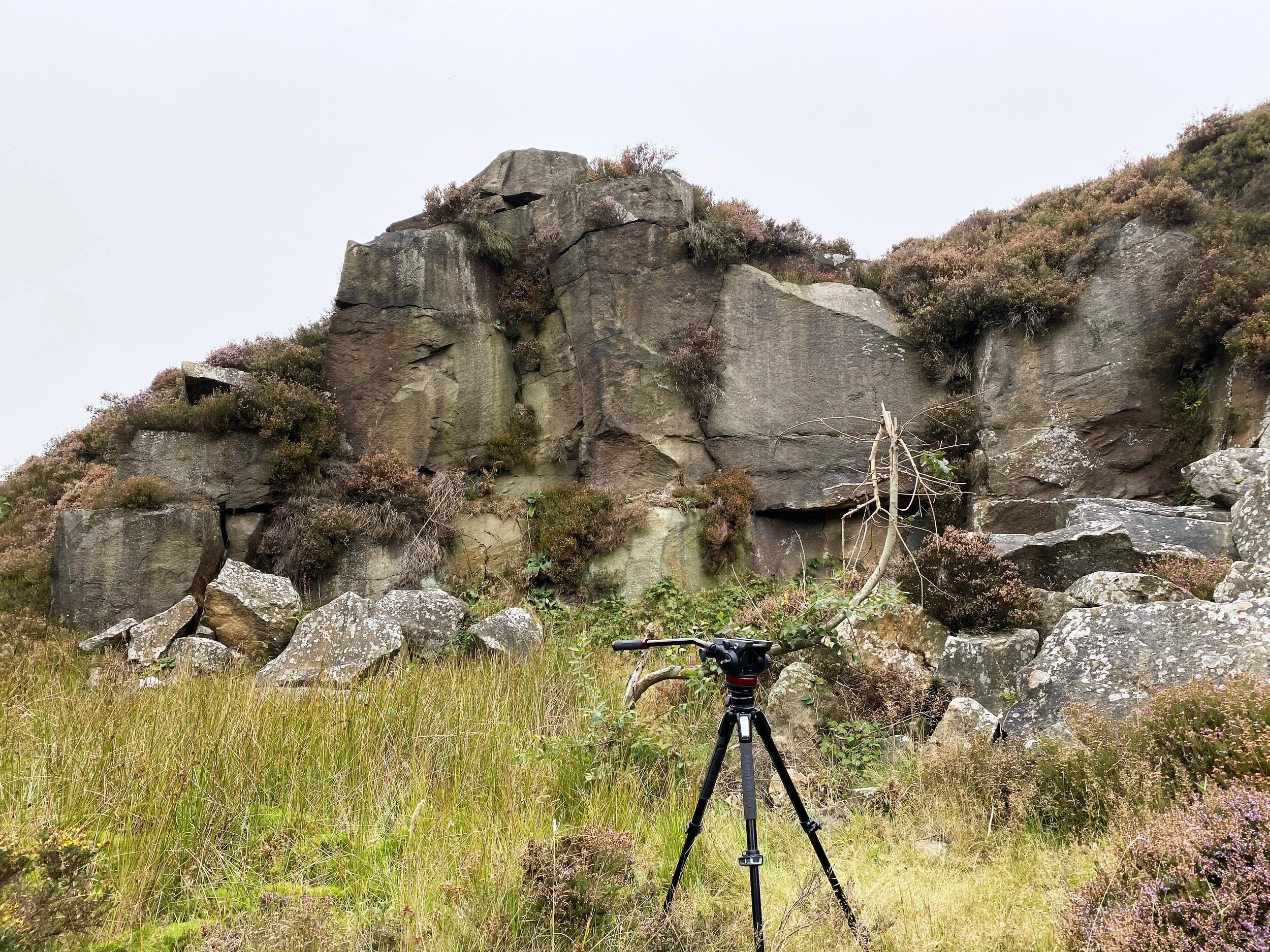
My encounters with this small disused quarry in the Peak District took place while undertaking the Freelands Artists Programme, in partnership with Site Gallery and the Freelands Foundation, during the Covid19 Pandemic. The resulting artworks, exhibited at Site Gallery in Sheffield, speak of intimate encounters with rock and moss that leave my material body symbiotically fluid and enmeshed with shared ancestral knowledge.
Field Visits at the Rowsley Quarry. Documentation by Victoria Lucas
The residency was initiated by a series of field visits to a small disused quarry situated on land that once formed part of Hassop Hall Estate, and before that, Chatsworth Estate. The wedge of land now belongs to private owners, flanked by Chatsworth Estate and the Peak District National Park. The quarry is protected as a Site of Special Scientific Interest due to its diverse mix of heather moorland and blanket bog and is long since disused. According to a local retired quarry archaeologist I spoke to, the gritstone that was extracted from the site was used to construct local infrastructure and farm buildings. This was quarrying on a small scale, and yet it became symbolic of extractive industries on a larger scale in the context of this enquiry. I was eight months pregnant when I was first introduced to the Rowsley site by the landowners Gaynor and Eric, who I had met while undertaking the Wirksworth residency. I didn’t realise at the time, but this site was to remain with me throughout the period of leave, entangling with my shifting identity as I became a mother for the first time. After a period of maternity leave, I returned to my practice keen to work with the quarry as part of my Platform residency at Site Gallery.
All text and images included on this page are © Victoria Lucas
I found myself becoming materially bound to the site with each visit. It became a space in which I could explore my changing subjectivity as a new mother and a birthing body through the biological reclamation of the cut rock. I considered the language of the quarried geology of the land – extraction, aggregate, strata, reclamation – as a metaphorical method in which to excavate and redefine my female subjectivity. Through encountering as a core method, the site became part of my body, and I became part of it. Over time, through processes of reflection, interaction, experimentation and stillness, I developed a text-based narrative in which I am also reclaimed by the moss colony. My destabilised and evolving subjectivity as a birthing body became a fissure in which the resilience of the moss could thrive; and thus it not only worked to decolonise and repair the post-industrial site of the quarry, but also my cultural body through an deep sense of material entanglement. It is in this site that I was irreversibly and profoundly reclaimed as a subject. Thus, the process of building a material relationship with this living colony worked to reclaim my culturally-imposed gender through physical contact and a process of being-with and learning-from, reconnecting my living entity as a materially entangled one.






Further Information about this project can be found at the below links:
https://www.sitegallery.org/projects/freelands-artist-programme/
https://www.sitegallery.org/victoria-lucas/
https://www.victorialucas.uk/work-1/coalesce
https://www.victorialucas.uk/work-1/entanglement
https://www.victorialucas.uk/work-1/aggregated-form
https://www.victorialucas.uk/work-1/standpoint



